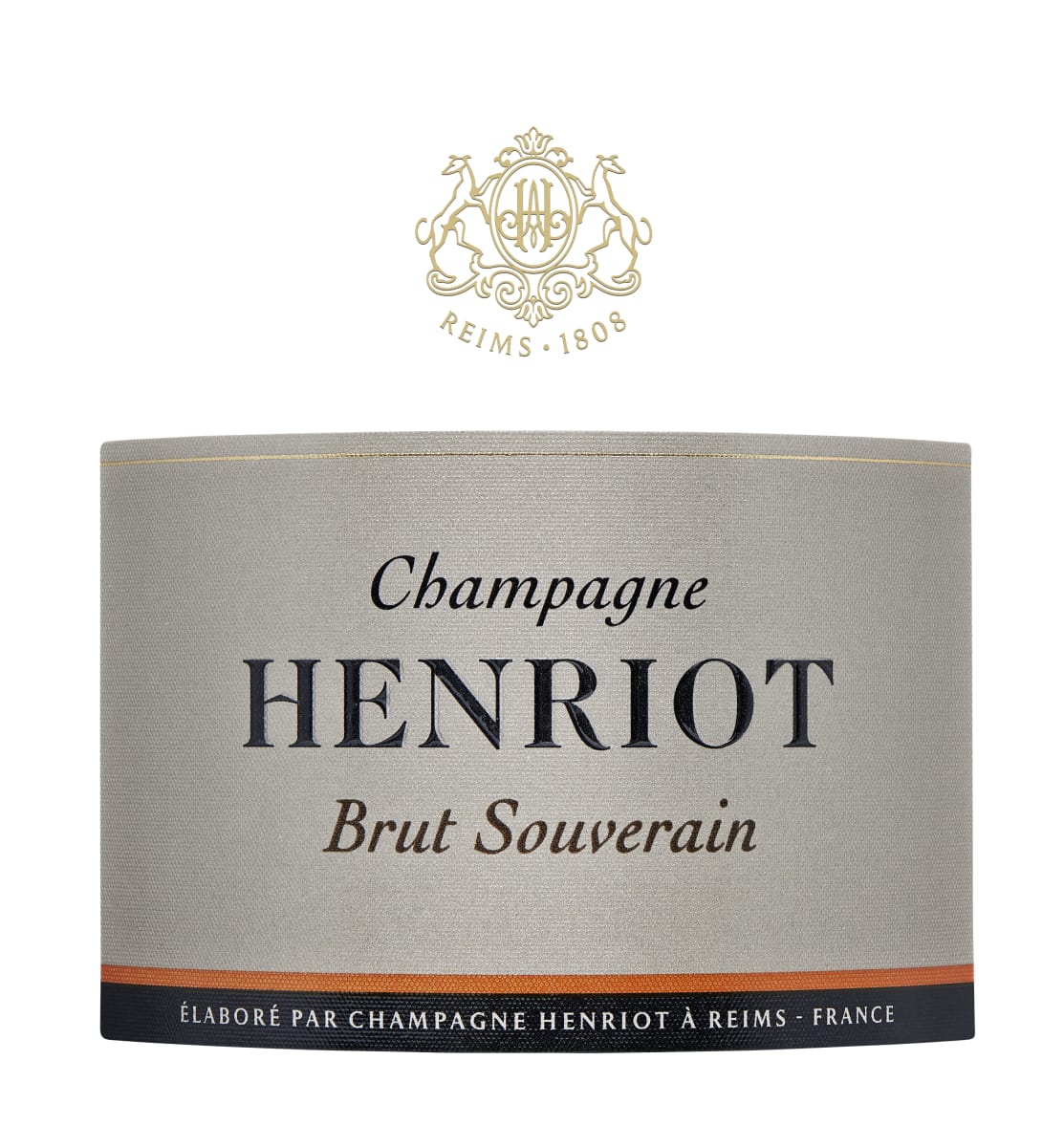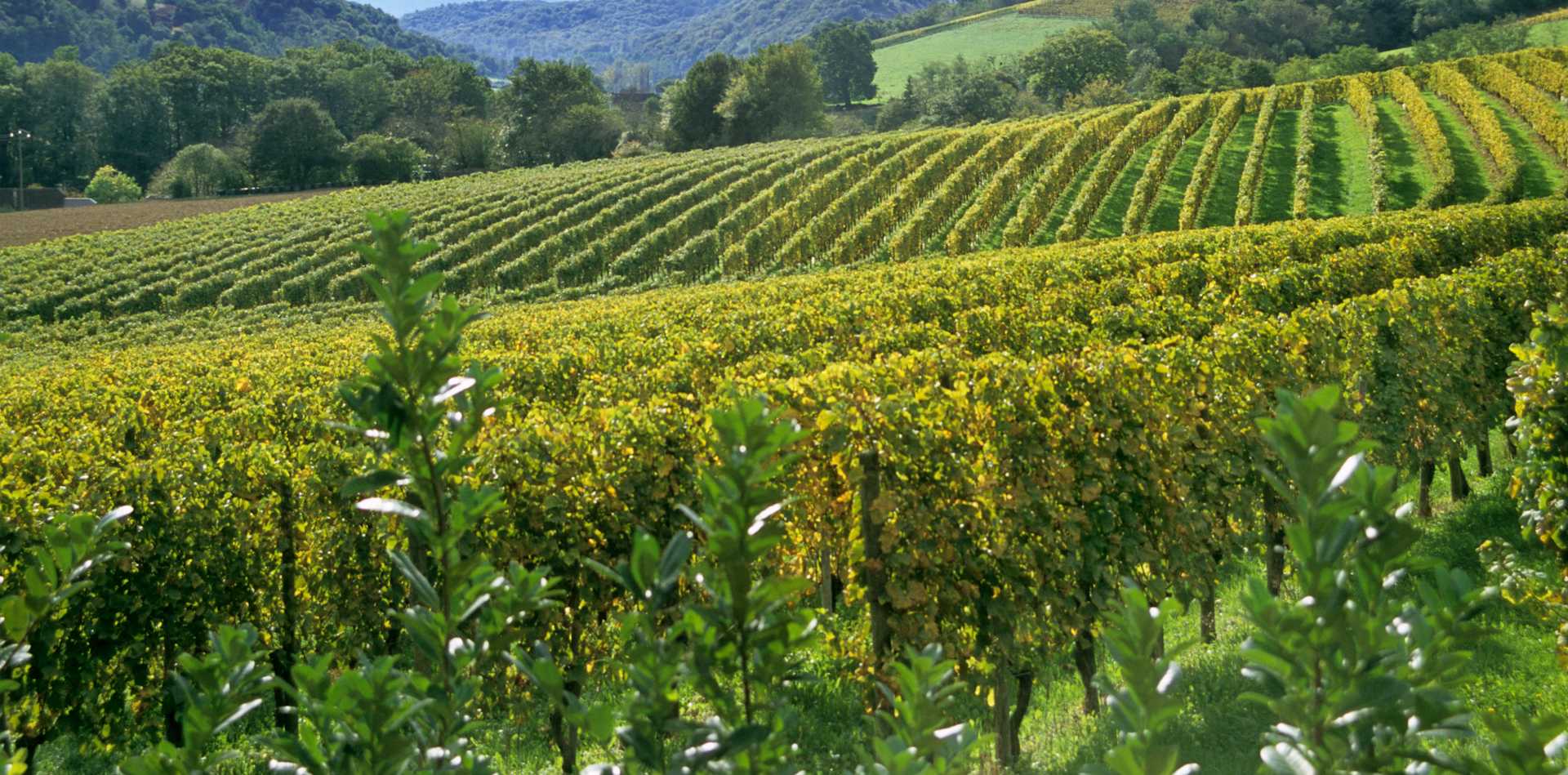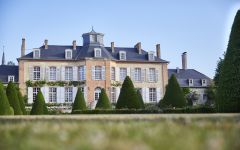Henriot Brut Souverain (375ML half-bottle)
-
Wilfred
Wong -
Wine
Spectator - Decanter
-
Wine
Enthusiast -
James
Suckling -
Wine &
Spirits


Product Details
Your Rating
Somm Note
Winemaker Notes
The Brut Souverain is the most historical cuvée in the portfolio, as it was the first cuvée Apolline Henriot produced in 1808. Apolline aspired to put the light on her vineyards through the expression of a champagne. According to her, one year was not enough to tell the story of the terroirs, so she decided to put wines in reserve each year to incorporate them into a future blend. Therefore, she founded the House by creating a Champagne that would have blending as its fundamental principle. The House respects this philosophy today and uses every terroir in this multi-cru, multi-vintage cuvée. It was named Brut Souverain by Ernest Henriot, Apolline's grandson, when the House was appointed the official champagne supplier to the Courts of the King of Holland and of the Emperor of Austria-Hungary.
Blend: 50% Pinot Noir, 40% Chardonnay, 10% Pinot Meunier
Professional Ratings
-
Wilfred Wong of Wine.com
COMMENTARY: The Henriot Brut Souverain stands tall as one of Champagne's most consistent and high-quality non-vintage brut. TASTING NOTES: This wine hits on all cylinders. Its lively and enticing aromas and flavors of tart apple and bracing minerality are more lovely with its light touch of yeastiness. Pair it with longneck clam sashimi. (Tasted: March 14, 2019, San Francisco, CA)
-
Wine Spectator
This vivid Champagne is tightly meshed, with a firm spine of acidity married to notes of poached apricot, toast point, preserved lemon and white cherry. Minerally through the creamy, focused finish.
-
Decanter
Toasty nose. Well-mannered with a creamy mousse, an impressive light texture, bready flavours and light mineral notes on the finish.
-
Wine Enthusiast
Bright white fruits and a fine balance between richness and crisp acidity are the hallmarks of the nonvintage Champagne from this producer. Perfumed and with delicious apple and peach fruits, the bottling is ready to drink. Editors' Choice.
-
James Suckling
This has aromas of chopped apples, biscuits, croissants, walnuts, praline and lemon pie. Dry, tasty and toasty, with a medium body, fine bubbles and bright acidity. All in balance. 48% pinot noir, 42% chardonnay, 10% meunier. Base 2016, with 38% reserve wine.
-
Wine & Spirits
Brut Souverain is almost equal parts chardonnay and pinot noir, with five percent pinot meunier; reserve wines account for 30 percent of the blend, enriching it with bready notes and almond-like touches of maturity. The richness gives it a sweet impression, integrated into the tangy notes of cider and mint, then lasting on chalky savor. This would make a rich aperitif, or a partner to thinly sliced roast veal. Best Buy




Founded in 1808 by Apolline Henriot, Henriot is one of the most historic Champagne Houses with more than two hundred years of heritage and savoir-faire. When she founded the house, it was Apolline's desire to "shine a light on her lands through a Champagne." Guided by a manual about viticulture and winemaking in Champagne written by her great-uncle, she had a profound understanding of the vines and the environment in which they take root, (known today as terroir). Apolline believed that "wine is written in the vineyard," a founding principle that continues to guide the house through today's environmental challenges.
Since 2020, Henriot has focused on the preservation of the vineyards and the terroirs under the leadership of Cellar Master and Vines Director Alice Tétienne. Born and raised in Champagne, she is one of the youngest and the few females in Champagne to hold the position and has an impressive background in viticulture, oenology, and communication. Tétienne was awarded the “Best Winemaker of the Year” in 2020 by Trophées Champenois, named a “Top 100 Master Winemakers” by the Drinks Business in 2023 and shortlisted as "Sparkling Winemaker of the year 2023" by IWC.
She founded Alliance Terroir in 2020, a collective that works together in favor of the preservation of the terroirs in the context of global climate warming and the need to account for environmental and societal challenges. This includes training and support of grower partners through the HVE (“Haute Valeur Environementale”) and VDC ("Viticulture Durable en Champagne") certification processes, to conduct the vineyards in sustainable ways, and adapting to climate change. She has also demonstrated an actionable approach in sustainability through carbon reduction and recycling.

A term typically reserved for Champagne and Sparkling Wines, non-vintage or simply “NV” on a label indicates a blend of finished wines from different vintages (years of harvest). To make non-vintage Champagne, typically the current year’s harvest (in other words, the current vintage) forms the base of the blend. Finished wines from previous years, called “vins de reserve” are blended in at approximately 10-50% of the total volume in order to achieve the flavor, complexity, body and acidity for the desired house style. A tiny proportion of Champagnes are made from a single vintage.
There are also some very large production still wines that may not claim one particular vintage. This would be at the discretion of the winemaker’s goals for character of the final wine.

Associated with luxury, celebration, and romance, the region, Champagne, is home to the world’s most prized sparkling wine. In order to bear the label, ‘Champagne’, a sparkling wine must originate from this northeastern region of France—called Champagne—and adhere to strict quality standards. Made up of the three towns Reims, Épernay, and Aÿ, it was here that the traditional method of sparkling wine production was both invented and perfected, birthing a winemaking technique as well as a flavor profile that is now emulated worldwide.
Well-drained, limestone and chalky soil defines much of the region, which lend a mineral component to its wines. Champagne’s cold, continental climate promotes ample acidity in its grapes but weather differences from year to year can create significant variation between vintages. While vintage Champagnes are produced in exceptional years, non-vintage cuvées are produced annually from a blend of several years in order to produce Champagnes that maintain a consistent house style.
With nearly negligible exceptions, . These can be blended together or bottled as individual varietal Champagnes, depending on the final style of wine desired. Chardonnay, the only white variety, contributes freshness, elegance, lively acidity and notes of citrus, orchard fruit and white flowers. Pinot Noir and its relative Pinot Meunier, provide the backbone to many blends, adding structure, body and supple red fruit flavors. Wines with a large proportion of Pinot Meunier will be ready to drink earlier, while Pinot Noir contributes to longevity. Whether it is white or rosé, most Champagne is made from a blend of red and white grapes—and uniquely, rosé is often produce by blending together red and white wine. A Champagne made exclusively from Chardonnay will be labeled as ‘blanc de blancs,’ while ones comprised of only red grapes are called ‘blanc de noirs.’
